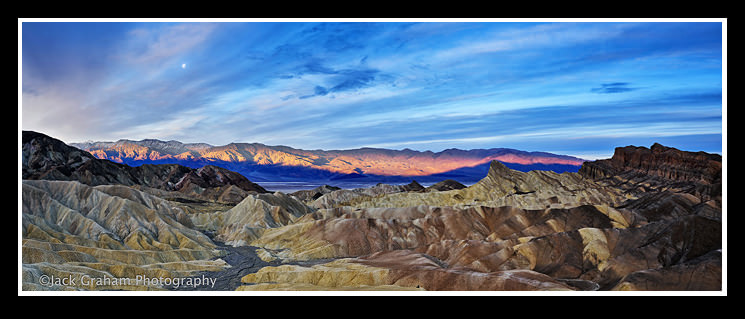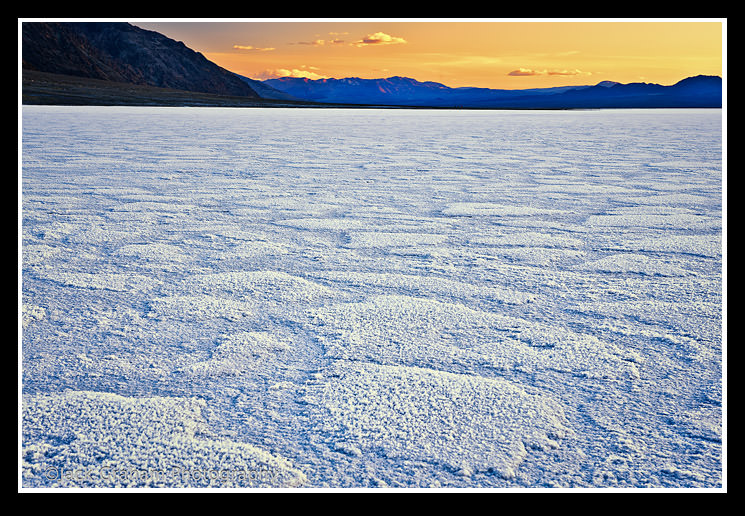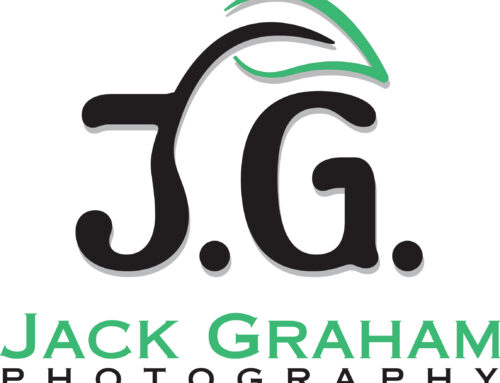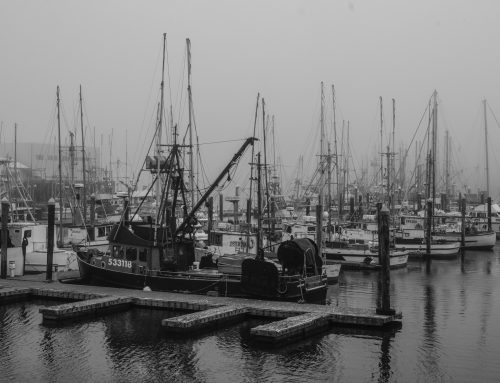Jack Graham Photography Workshops https://www.jackgrahamphoto.com/photo-workshops
DEATH VALLEY NOVEMBER 2011 —- https://www.jackgrahamphoto.com/death-valley-national-park
Images courtesy of a few of my participants from last February’s workshop, as well as a few of my own.
Want a photographic challenge? Head to Death Valley NP in South eastern California. Death Valley spans over 3.3 million miles making it the largest national park in the USA. The closest major city is Las Vegas;Death Valley’s some of the most expansive terrain offering unique and inspiring landscapes in the world.
Photographing in Death Valley offers many completely different areas to photograph. There are few “icons” in this National Park. Monument Valley has its familiar monoliths, Yosemite NP has its familiar majestic mountains etc, but in Death Valley NP, few recognizable icons exist. You are there in the vastness, looking for patterns, textures and color. This is a challenge for even the seasoned photographer. Trying to photograph in Death Valley without proper preparation (that’s why I suggest doing a workshop there!) can literally “eat you up” due to lots of things that I’ll discuss here!
During my workshops, we photograph from the expanse of the playas (dried up salt flats) to the many canyons within the park. Based on many years of leading workshops and photographing here in Death Valley, I am familiar with the hundreds of locations, some not on the visitors guides, and being at the right location in prime time for the best light and near endless photographic opportunities, As a rule, bad weather can create good light, so I always hope for some degree of bad weather.
I choose to conduct workshops in Death Valley NP during the late winter and fall in order to take advantage of the friendlier temperatures, as well as the low angle of the light allowing for many hours of quality photography. Typically in February and March it’s possible to venture out to the flooded playas at Badwater and Cottonballs for some dramatic sunrise images. In the fall we are able to get out to the “Race Track” that is usually flooded in the winter and thus the road is closed. The Racetrack is a place of stunning beauty and mystery. The Racetrack is a playa, or a dried up lakebed, best known for its strange moving rocks (probably caused by wind!). Although no one has actually seen the rocks move, the long meandering tracks left behind in the mud surface of the playa attest to their activity.
Photographically,Death Valley is a study in patterns and textures. During our workshops, we typically work on all of the obvious techniques that go into making quality photographs, but we’ll also work on learning to see, and slowing down in order to make the most of our time in this magical area.
Death Valley is a great area to work on photographic skills. One must take light into consideration more than anywhere else. Side lighting, backlighting, the use of HDR will all be discussed and used to capture images in Death Valley. February and November commonly offers dramatic light. We’ll work on images that portray depth, surprise and drama, while use leading lines, foregrounds and other graphic elements to make some great images.
We will venture out onto the sand dunes as well for some interesting night photography instruction and images!
Within the park are some old mines, and wooden structures that we’ll photograph as well. Some, but not all locations include Zabriskie Point, Mesquite Sand Dunes, Mosaic Canyon, Golden Canyon, Badwater, Dante’s View, Devil’s Golf Course, Artist’s Palate, and the Race Track. In addition we usually visit the ghost town which features a three story bank, a jail house and train depot all now in ruins. I usually custom tailor my agenda on the weather and light conditions and allow sufficient time for image reviews and photographic presentations.
I am a great believer in preparation, understanding where I am photographing and becoming part of the land and environment. Nowhere is this more important than in Death Valley.
PHOTOGRAPHY TIP: Unless we just get lucky to get out of out vehicles and hit on some really dramatic light, we’ll take some time and bond with our surroundings. I guarantee that unless you’ve been to DV you will be overwhelmed with its inert beauty. Rushing to make photographs will result in mediocre results. Decide what strikes your eye or what is perhaps creating dramatic detail…Understand where we are, appreciate the inert beauty and slow down……..take all in …. And I guarantee that you’ll come away with great images
WHAT MAKES PHOTOGRAPHING IN DEATH VALLEY DIFFERENT FROM ALL OTHER NP’S
Death Valley is spacious, that is an understatement. Unlike no where else in the United States does this become as intimidating as here. In addition, texture and patterns create photographic opportunities all over the park.
1) I always try to find a foreground-–mainly because of the vastness in many location
2) I am always looking for depth in an image using a wide angel lens. WE will work on hyper focal length, which is absolutely necessary to get the depth of field you want. You have to get low to the ground lots of times to get the correct depth and angle you need for a dramatic image.
3) PRS—–I always look for patterns, repetition and simplicity
4) Again because of the expanse, you need to pay attention to your backgrounds and make sure they don not take away from the scene.
5) Exposures can be tricky in DV because of the dramatic and sometimes contrasting light. Learning to meter using your spot meter is very important. Using graduated Neutral Density filters can compensate for quite common lighting difficulties.
_______________________________________________________
WHAT TO BRING to DVNP:
ESSEN TAL PHOTOGRAPHIC EQUIPMENT: (besides camera gear……I carry lenses from 24-300mm plus a 1.4 teleconverter)
1) TRIPOD, LENS SHADES & CABLE RELEASE
2) GRADUATED NEUTRAL DENSITY FILTERS
3) POLARARIZING FILTER
BACK UP BATTERIES
_________________________________________________
PLACES TO STAY:
http://www.furnacecreekresort.com/furnace-creek-ranch-1223.html
Furnace Creek Resort
PO Box 187
Death Valley, California 92328
Physical: Highway 190, Death Valley, 92328
Phone: 760.786.2345
Fax: 760.786.2514
Other accommodations can be found at Stovepipe Wells (about 35 minutes drive from Furnace Creek:
http://www.stovepipewells.com/
PO Box 559
Death Valley, California 92328
Physical location: Hwy. 190
Death Valley, California 92328
Phone: 760.786.2387
Fax: 760.786.2389
Travel
Out of State
Fly into Las VegasMcCarranInternationalAirport. Death Valleyis about 150 miles or 2 ½ h hours. You take SR 160 north toParumph,NV. Follow the signs to Death Valley Junction, CA and from there take SR 160 into Death Valley. Continue to Furnace Creek
Southern California
Death Valley is about 350 miles from Southern California. Take I-15 north to Baker. From there head north on SR 127 to Death Valley Junction. Turn left on SR 160 into Death Valley. Continue to Furnace Creek.
FOOD/DINING
During the day, carry energy bars and maybe a few candy bars. There is NO water available when we are out in the park photographing. However there are stores in Furnace Creek where you can stock up and near Stovepipe Wells, near the Mesquite Sand Dunes andMosaicCanyonlocations. Staying hydrated is my primary concern and I will make sure to all have the proper supplies to avoid complications.
Breakfasts, lunches and dinners are available at our Furnace Creek Location.
Though eating is not a problem on this workshop you are there to photograph and often the best light is at breakfast and dinner. Please know this in advance.
CONSIDER COMING ALONG NEXT TIME!!!!!!














[…] (click links below) ARTICLE 1 “Which One Works” #5 — Death Valley National Park ARTICLE 2 The complete guide to Photographing the vastness of Death Valley National Park We will […]